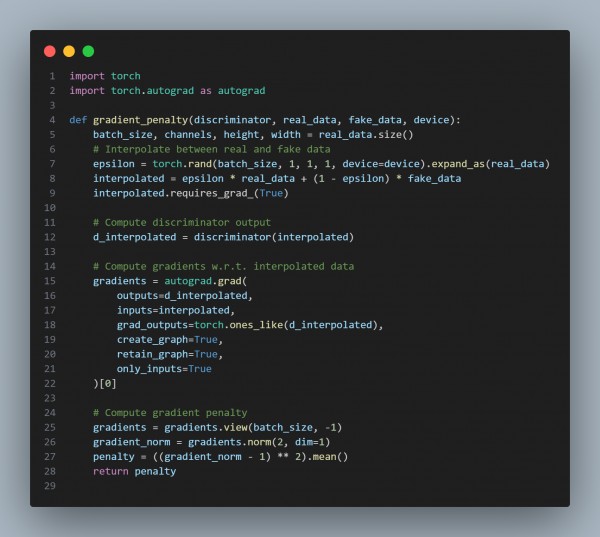To stabilize GAN training, You can implement the gradient penalty correctly, ensuring it enforces the 1-Lipschitz constraint. Here are a few steps you can consider before moving:
- Sample random points between real and generated data.
- Compute gradients of the discriminator output w.r.t these interpolated points.
- Enforce the gradient norm to be close to 1.
Here is the code snippet you can refer to:

In the above code, we are using the following key points:
- Ensure lambda_gp (gradient penalty weight) is tuned (typically 10).
- Use stable optimizers like RMSProp or Adam with proper learning rates.
- Monitor the gradient norms during training for debugging.
Hence, by referring to the above you can fix the gradient penalty implementation in GANs for stability
 REGISTER FOR FREE WEBINAR
X
REGISTER FOR FREE WEBINAR
X
 Thank you for registering
Join Edureka Meetup community for 100+ Free Webinars each month
JOIN MEETUP GROUP
Thank you for registering
Join Edureka Meetup community for 100+ Free Webinars each month
JOIN MEETUP GROUP